
The Paris Commune was a French revolutionary government that seized power in Paris from 18 March to 28 May 1871. During the Franco-Prussian War of 1870–71, the French National Guard had defended Paris, and working-class radicalism grew among its soldiers. Following the establishment of the Third Republic in September 1870 and the complete defeat of the French Army by the Germans by March 1871, soldiers of the National Guard seized control of the city on March 18. They killed two French army generals and refused to accept the authority of the Third Republic, instead attempting to establish an independent government.

The Communards were members and supporters of the short-lived 1871 Paris Commune formed in the wake of the French defeat in the Franco-Prussian War.

The Tuileries Palace was a royal and imperial palace in Paris which stood on the right bank of the Seine, directly in front of the Louvre Palace. It was the Parisian residence of most French monarchs, from Henry IV to Napoleon III, until it was burned by the Paris Commune in 1871.
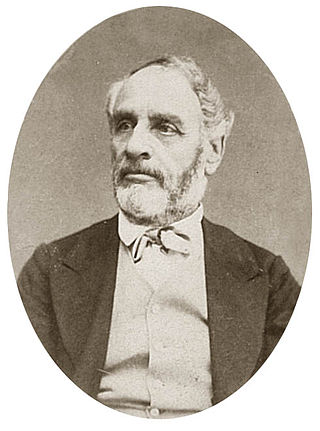
Louis Charles Delescluze was a French revolutionary leader, journalist, and military commander of the Paris Commune.

Théophile Charles Gilles Ferré was one of the members of the Paris Commune, who authorized the execution of Georges Darboy, the archbishop of Paris, and five other hostages, on 24 May 1871. He was captured by the army, tried by a military court, and was shot at Satory, an army camp southwest of Versailles. He was the first of twenty-five Commune members to be executed for their role in the Paris Commune.
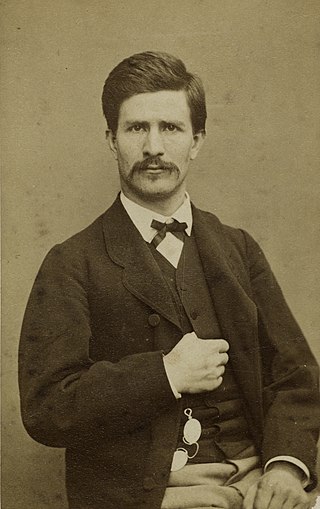
Louis-Nathaniel Rossel was a French army officer and a politician. On 19 March 1871, he became the only senior French officer to join up with the Paris Commune, playing an important role as Minister of War.
Events from the year 1871 in France.
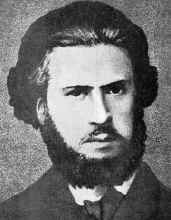
Eugène Varlin was a French socialist, anarchist, communard and member of the First International. He was one of the pioneers of French syndicalism.

Émile François Désiré Eudes was a French revolutionary, Blanquist socialist and participant in the Paris Commune.
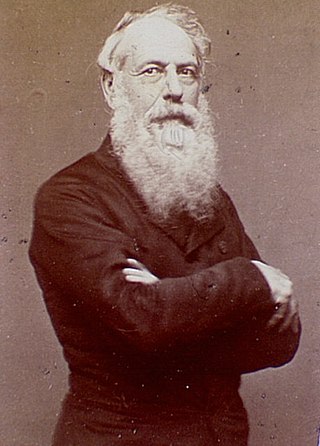
Jules Miot (1809–1883) was a French republican socialist who participated in the French Revolution of 1848 and in the Paris Commune of 1871. He was also a member of the First International.

Claude Lecomte was a French general killed by the National Guard of the Paris Commune.
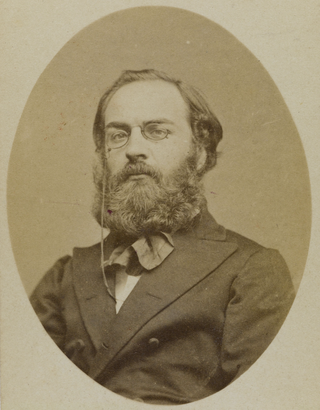
Raoul Adolphe Georges Rigault, was a journalist and French Socialist revolutionary, best known for his role during the Paris Commune of 1871.
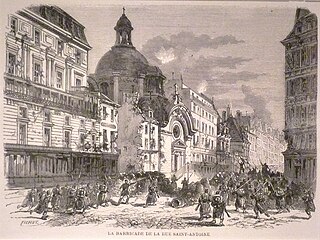
The semaine sanglante was a weeklong battle in Paris from 21 to 28 May 1871, during which the French Army recaptured the city from the Paris Commune. This was the final battle of the Paris Commune.

The Battle of Courbevoie was the first battle of the 1871 Paris Commune.
The Battle of Meudon took place on 3 April 1871 between the Paris Commune and Versaillais government forces near Meudon in the Île-de-France. The battle was part of the attempts by the Paris Commune to seize Versailles, the seat of Adolphe Thiers’ government, and it ended in a defeat for the Federates.
On October 31, 1870, a popular insurrection occupied Paris's City Hall. Amidst the Franco-Prussian War, Parisians simultaneously heard of losses at Le Bourget and Metz alongside armistice negotiations. Incensed by what they viewed as treason, a group of 300 to 400 demonstrated at the City Hall and members of the left-wing National Guard captured and occupied the building with several members of the Government of National Defense inside.

The Federated Legion of Women was an armed unit composed of women active during the Paris Commune in May 1871. It was founded in the 12th arrondissement, with the intended mission of hunting down deserters. The legion had uniforms, parades, and a standard-bearer, and was led by two officers, Colonel Adélaïde Valentin and Captain Louise Neckbecker. There were an estimated 20-100 members, most from working-class backgrounds. They held and attended meetings in Parisian political clubs, where they incited citizens to take up arms. After the defeat of the Commune, arrested members were given heavy sentences, including forced labour and deportation.

Adélaïde Valentin, also known as Colonel Valentin, was a labourer and communard. She was, during the last month of the Paris Commune, the colonel of the Federated Legion of Women.

Crimes de la Commune is a series of photomontages produced by French photographer Ernest-Charles Appert at the end of the Paris Commune. A Parisian photographer accredited to the Tribunal de la Seine, and sometimes cited as the forerunner of bertillonage, he photographed Communards incarcerated in Versailles and used these portraits in photomontages. This practice of committed photomontage is the subject of much debate. Furthermore, these photographs raise issues of both commercial practice and copyright.
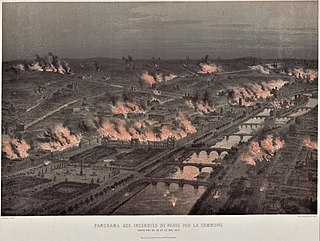
The fires of Paris during the Commune were the premeditated destruction of monuments and residential buildings in Paris mainly during Bloody Week, the period when Paris was recaptured by the Versailles army from Sunday, May 21 to Sunday, May 28, 1871.
















